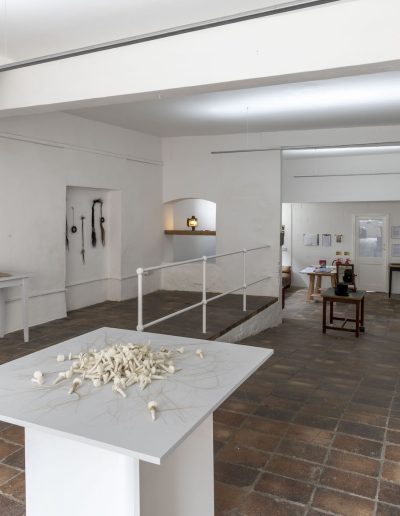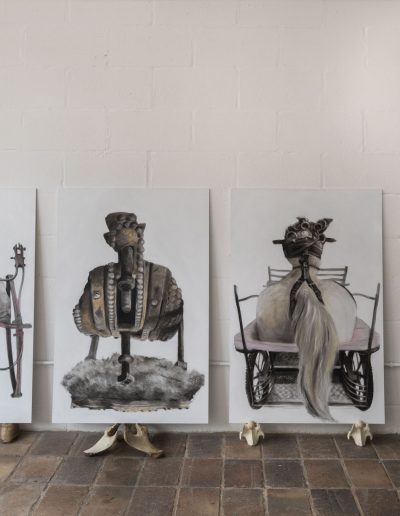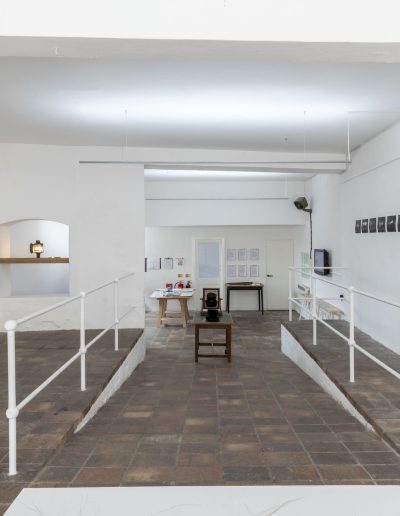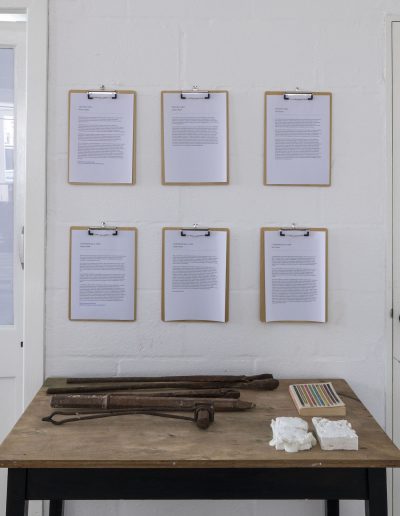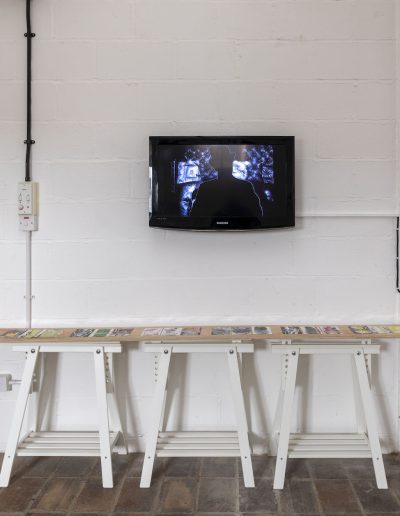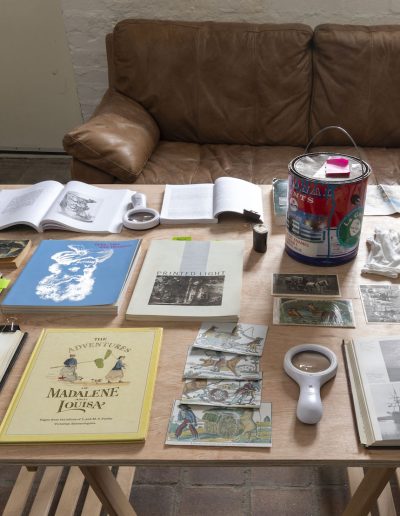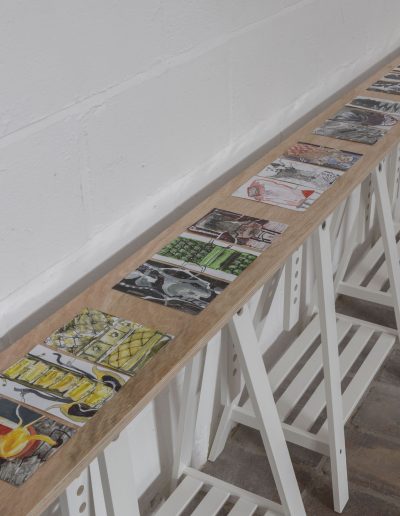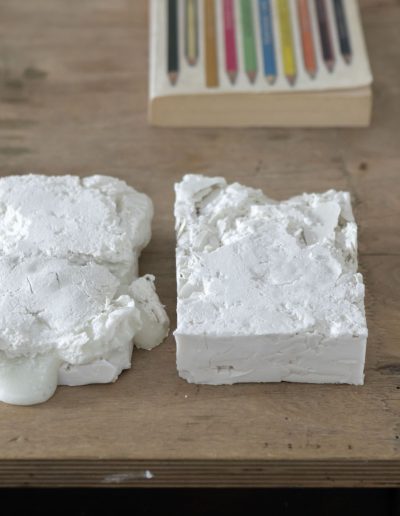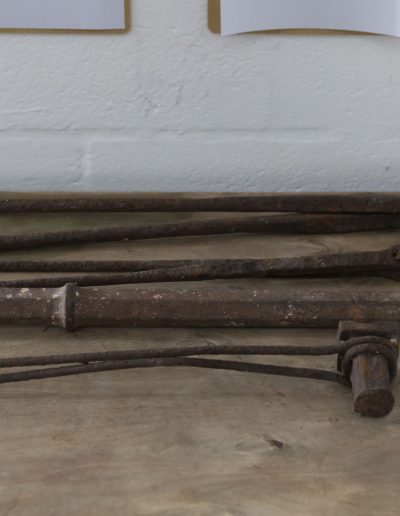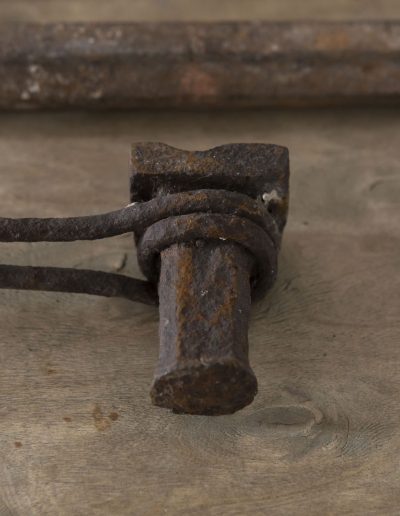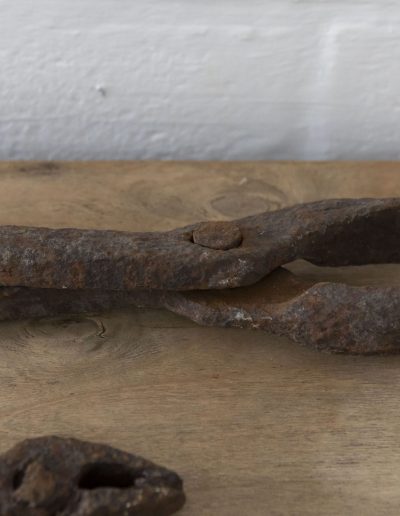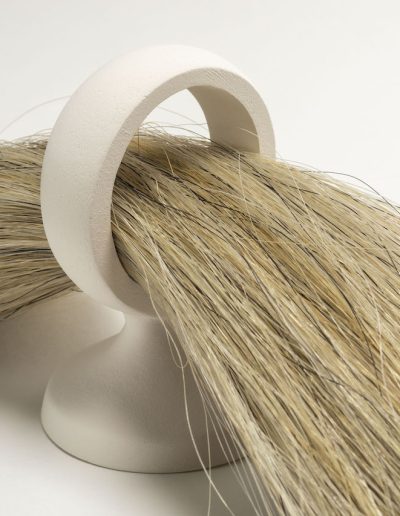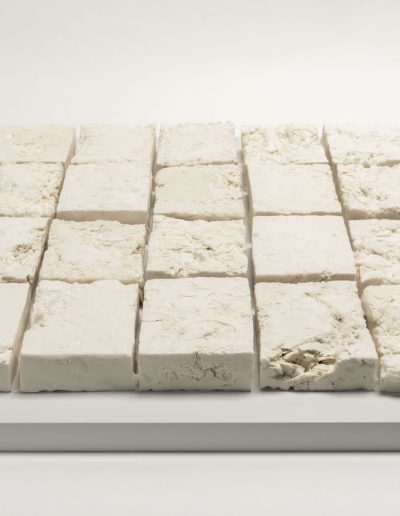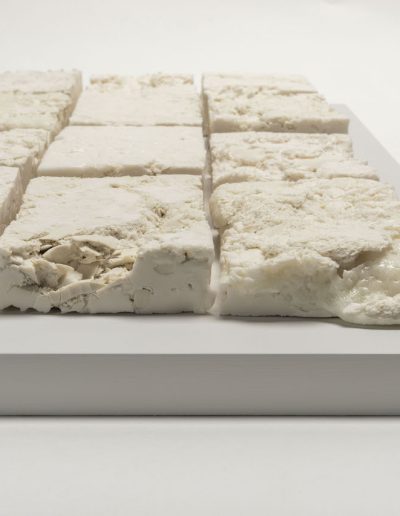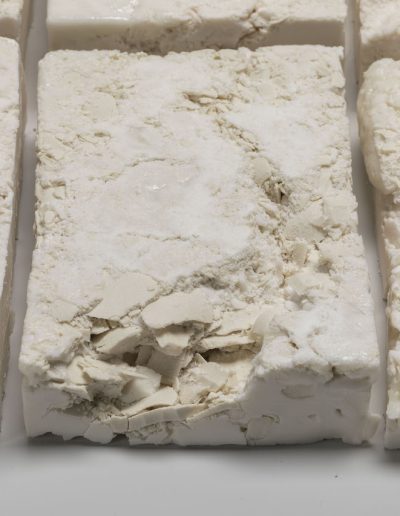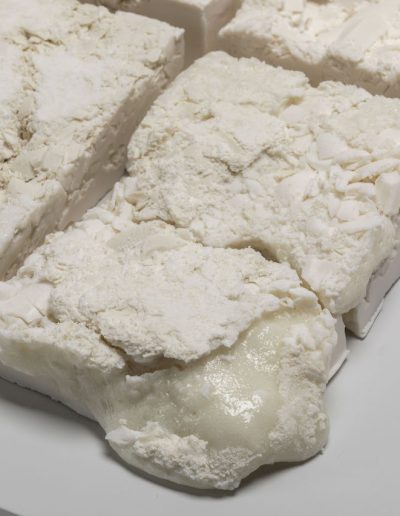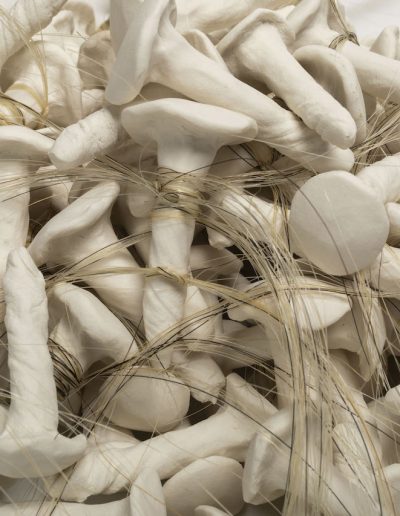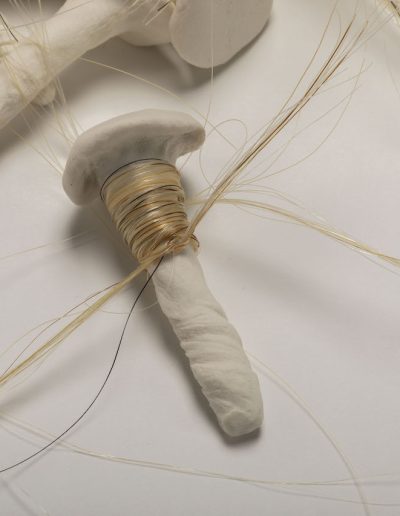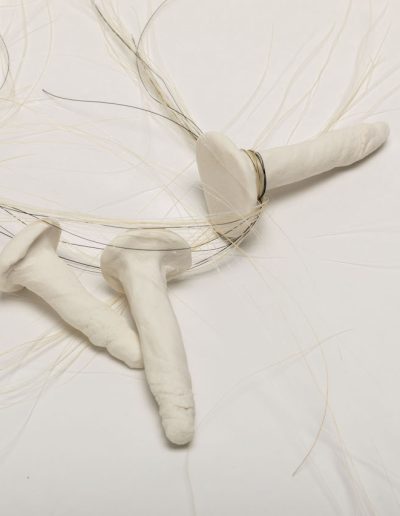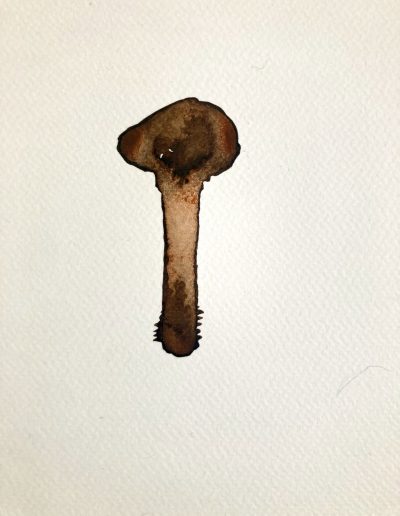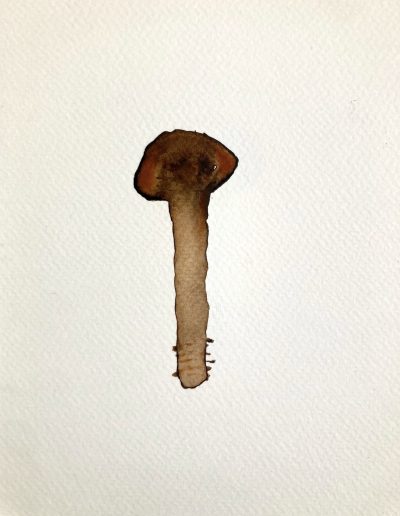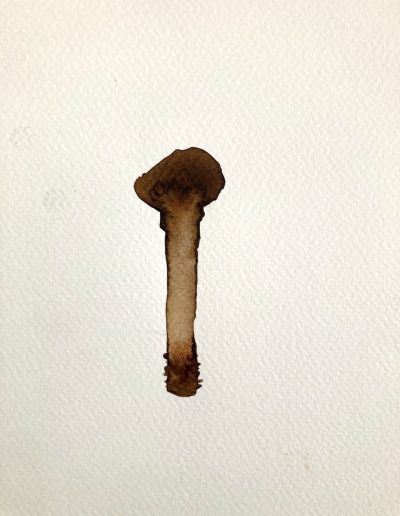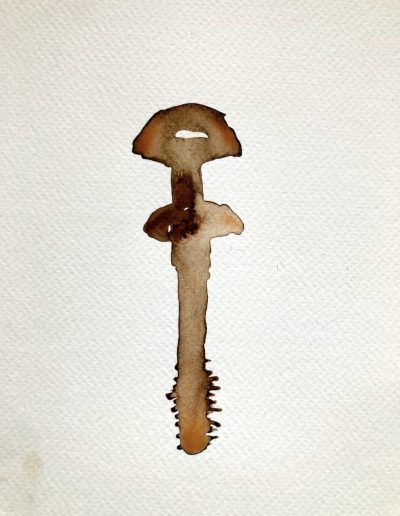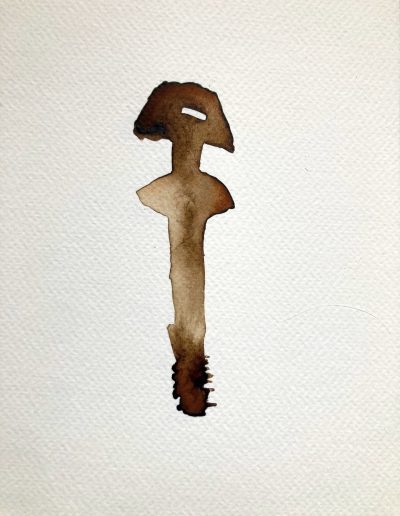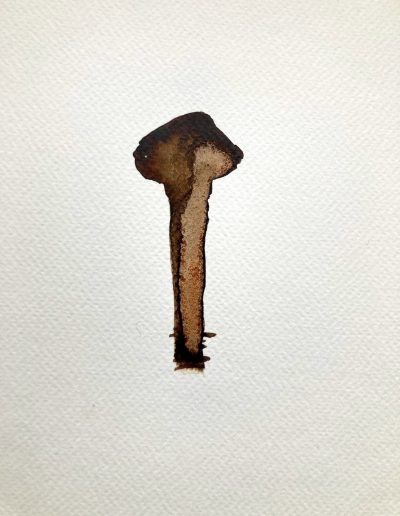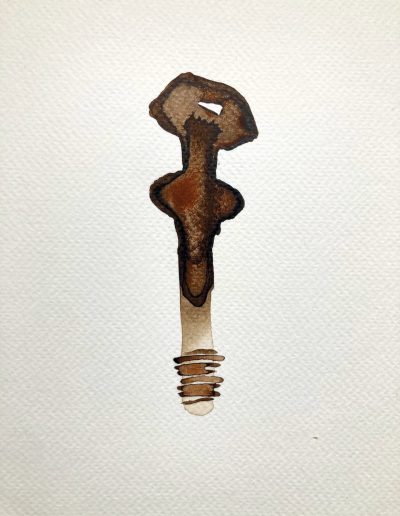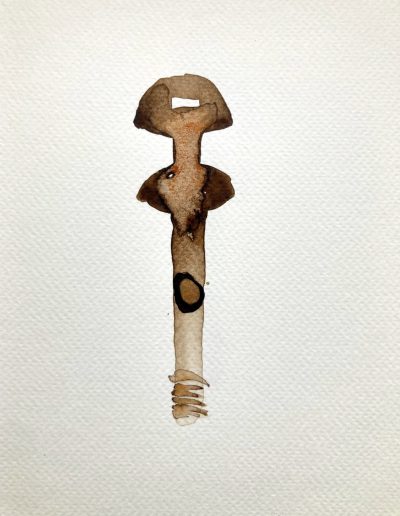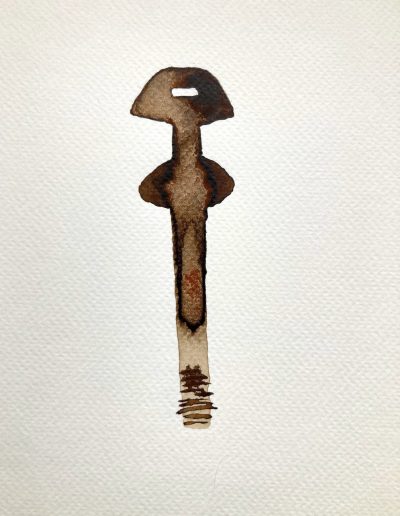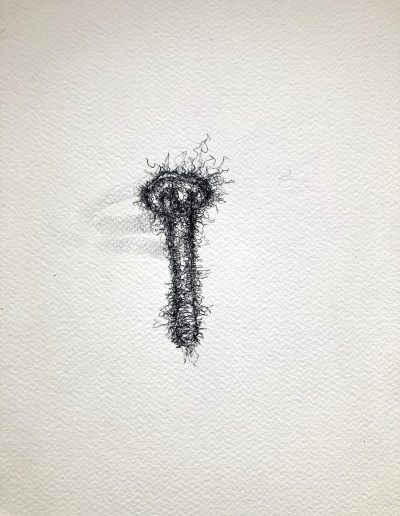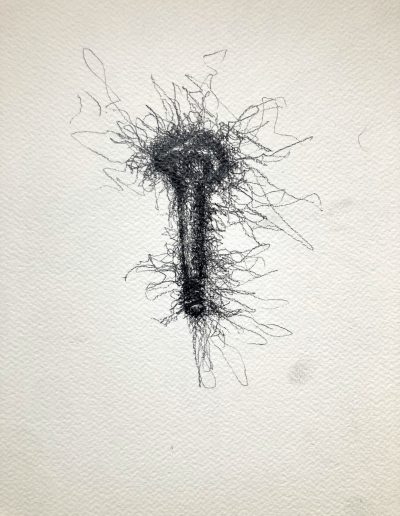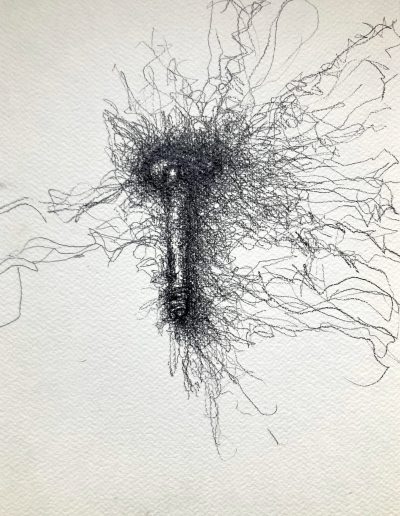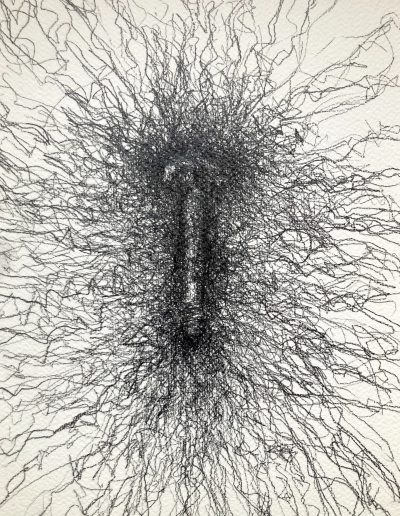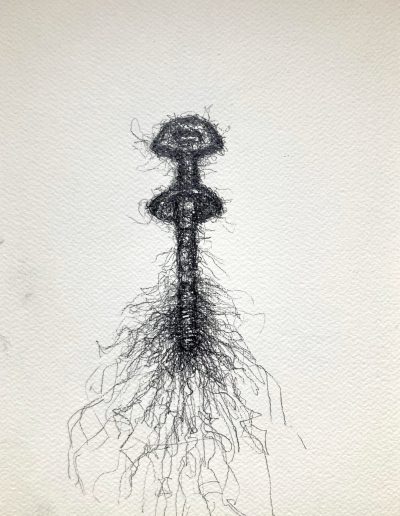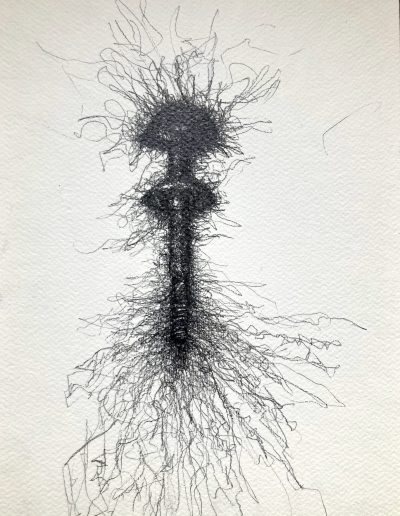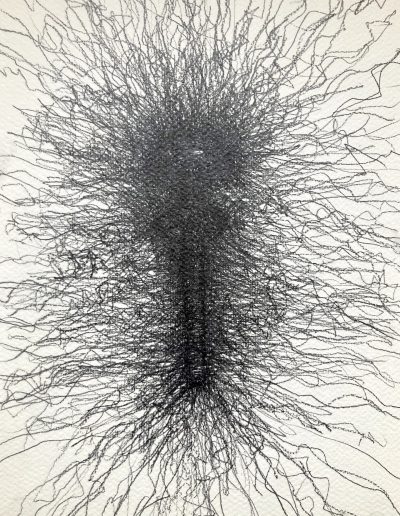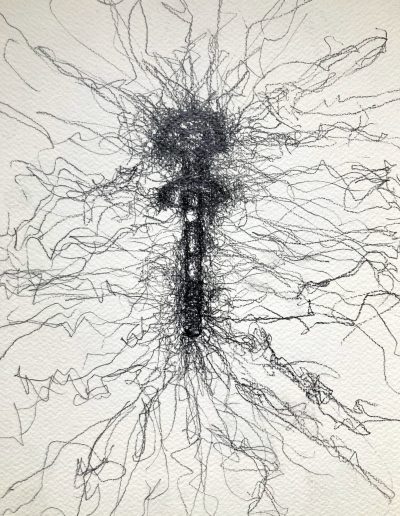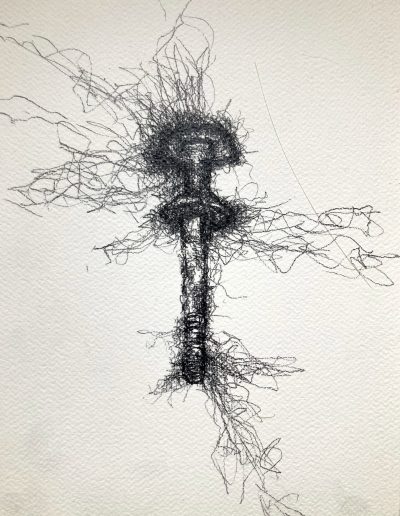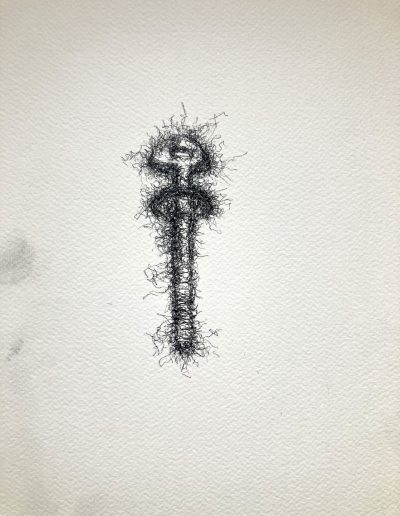Lost in Transit
6 May to 1 July 2023
Studio MADE
The Carriageworks, Denbeigh, Wales
Background to the Carriage Works
The Carriage Works in Denbigh, built in the late 1800’s, was a manufacturing business for the construction of horse drawn carriages (probably for a variety of purposes – movement of goods, funereal, domestic travel etc). This three story building, in the heart of the town, had metal and engineering work on the ground floor, joinery / carpentry on the first and upholstery at the top with a void running vertically through all floors in order to raise and lower items accordingly throughout the construction of each carriage. After the manufacture of horse drawn carriages came to an end, the building was used for mechanical repairs for cars whereby the community could bring their vehicles and use the tools on site to make repairs etc. The first floor in the building later became a Turkish restaurant.
Lost in Transit
Lost in Transit invited three artists myself, Penny Hallas and Louise Short to respond to both the buildings journey and the nature of ‘carriage’ in its broadest sense. This took into account the movement of people / goods – past and present whilst also giving space to the lost, hidden and intangible social histories and narratives within the building and the town.
In one sense, the building is a vessel that holds the forgotten, the overlooked, the individual – voices and conversations, dreams, aspirations, tears – the overheard and the misheard, the footsteps, whispers etc… It is a container of the past but all the while anticipates the memory of the future. It also represents the movement of people in and out of the building, where the doors are leaky conduits allowing a wider narrative to be carried beyond the threshold.
Exhibition Statement
“[W] hat is a thing, or indeed a person, if not a tying together of the lines – the paths of growth and movement – of all the many constituents gathered there?”
Lines, Tim Ingold, p.5
“To be a place, every somewhere must lie on one of several paths of movement to and from places elsewhere. Life is lived . . . along paths, not just in places, and paths are lines too. It is along paths, too, that people grow into a knowledge of the world around them, and describe this world in the stories they tell.”
Lines, Tim Ingold, p.3
Tim Ingold suggests that to study people, things or place is to study the lines they are made of.
In responding to the Carriageworks building I have wondered how I might record the many layered and interwoven imagined pathways that have led to and from the building and been walked within the building itself; the relationships between the crafts people, between hands and tools, tools and material. How to map a community of labour? I came away from my visit to the building with some iron bolts in my pocket, similar perhaps to those used in the building of carriages, and perhaps forged in the building itself. These have been my starting point. Small unseen parts that can perhaps act as metaphors for the multitude of unseen labours and activities involved in the building and running of horse and carriage.
A carriage is an inert thing without a horse to pull it, and yet the horse felt palpably absent within the building itself. In my searchings into carriages and carriage life my attention became drawn to the life and work of the carriage horse. Focusing on the parts of a harness that connect horse with carriage, those parts that signal the tension created as horse takes up the strain and steps forward, I have begun carving these forms from parian porcelain. Combining these forms with hair from a horses tail – tail hair that was often removed from the carriage horse – I hoped they might act as totems and mythic style objects that could in some way pay homage to the labours of the horse.
Each carved object takes many hours to create. As I carve I have collected the residual shavings and dust; the residue of labour a signal to the time and work involved in crafting an object. I have formed this residue into bricks / tiles, imagining as I do, the residue of work that has collected on the floors of the Carriageworks through the different lives it has lived.



